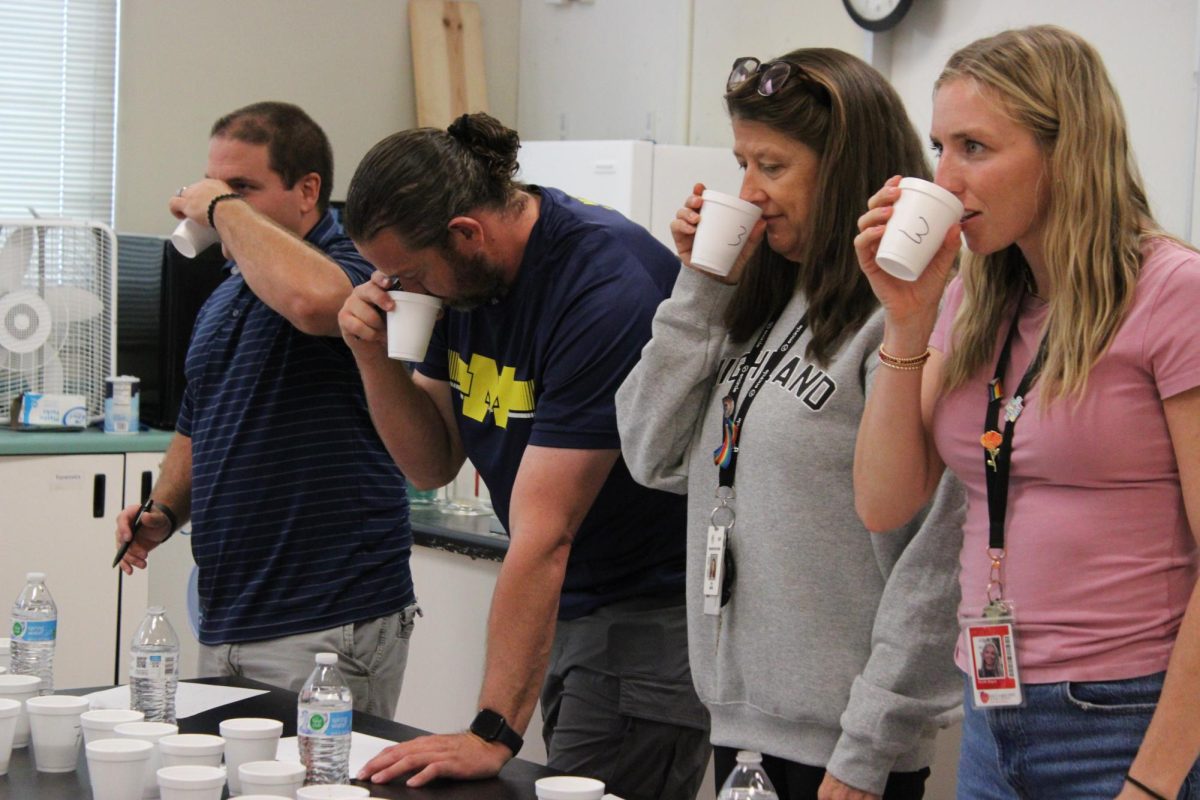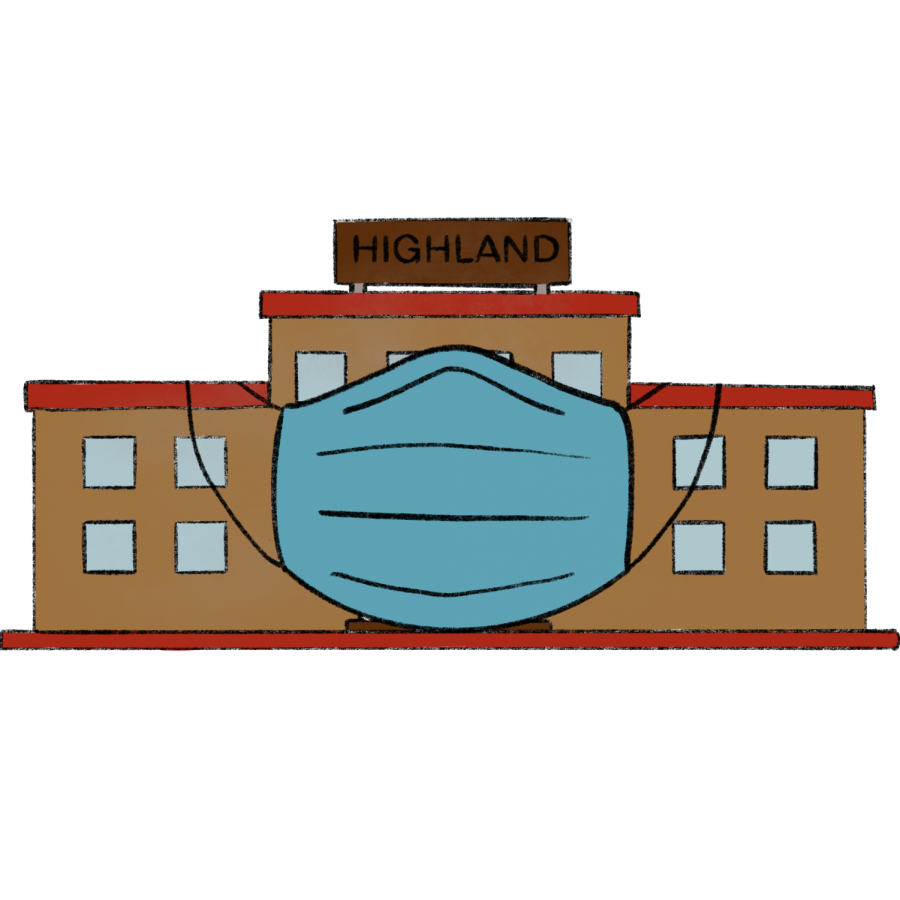Should Schools Reopen?
Schools are no longer restricted by pandemic safety measures.
December 18, 2020
March 13, 2020 was Salt Lake School District’s last day of school in terms of a physical, more connected environment. Ever since that Friday the 13th, schools have been forced to shut down and move towards virtual learning for students and teachers. This sudden and drastic change of education has certainly brought stress, tension, and impatience among students and staff with a questionable schedule.
Students are stressed and finding themselves less motivated and connected as they normally would be in physical school. These strong emotions have led to some unrest and desires to return to physical learning as soon as possible. However, is this really the best solution to the education of students when cases are increasingly spiking?
I do find that the current organizations and methods of online schooling are constraining and poorly organized. The digital system is certainly worse than physical learning, but I do not believe that moving back to physical schooling is the best option at this time. Frankly, I believe that the current slow transition towards in-person learning is a risky decision being made by district officials. I value my education greatly and have found the online schedule difficult, so I understand why officials and students want to transition back into the normal schedule, but unfortunately it is just not safe enough at this time.
Although many unnecessary businesses such as restaurants, gyms, theaters and bars are opening and presenting their own risks while schools are forced to stay closed, that does not mean that we should be opening schools as well. The education and mental well-being of students is a great concern and priority, but so is the physical health of both students and those outside of schools who are at risk of contraction from any infected students.
Currently in Utah, our local cases have been reaching daily numbers of up to 5,000 and an average daily rate just under 3,000 cases and over 25% positive rate. We are also above the highest peak of deaths from July with a current average of 12 deaths per day. As of today, our hospital ICU units are in the negative capacity which means they are over 90% capacity; in other words, there are not enough ICU beds available to handle COVID-19 patients in the state.
This alone should be enough to show that we can’t risk contributing to infections and deaths by sending children to schools and not expecting outbreaks in students and those outside school environments. While Salt Lake District schools are not yet open, other school districts within the state have shown that opening their buildings for students was not necessarily a good idea.
A collection of evidence and studies have all concluded that teens are currently the age group with the highest contractors and spreaders. School aged youth have dramatically increased in these categories ever since the opening of various schools throughout the state. Since September, the number of cases associated with schools increased in all youth age groups from 5-24, with high school aged students being the greatest. The incidence of contraction in school aged youth is also currently 4-5 times higher than when physical schooling was approved in certain districts and it is still increasing.
These outbreaks have also forced schools that had reopened to simply close once again. If anything, the constant opening and closing of schools is probably more stressful and impactful on students than if they had stayed in remote learning entirely. Along with this constant stress among students, their safety has also been put at risk multiple times. Opened schools have a threshold that forces them to close once they cross the 15-case threshold, and the number of schools currently above the threshold have not decreased over time.
In a recent study that was conducted across the state, 83 schools in 17 districts have passed the 15-case threshold and were forced to shut down after reopening. Some of the larger districts included in these numbers are the Davis, Jordan, Granite, Alpine, Canyons, and Nebo school districts. Davis and Jordan each had 15 schools pass threshold with Alpine having 10 schools pass the threshold and Granite having 8 schools also passing. At least 20 of these schools across the state have crossed the 15-case threshold not just once, but twice.
Along with in person schooling, indoor sports are also top contributors of youth outbreaks. Many students have had a hard time adjusting to the new quarantine environment because they normally relieve stress with sports. However, sports have been shown to lead in spreading of the virus. Volleyball is the highest risk sport with 2 times the number of cases contracted compared to non-volleyball sports, and 4 times the amount compared to outdoor sports.
Focusing on mental health once more, recent studies have shown that mental health is deteriorating in students, teachers, and parents in remote learning. These can stem from previous mental health issues and the varying living situations these individuals are in. Many believe that physical learning is a solution to ease this stress, but that may not be the case. Apart from the dangerous infection risk, studies have also shown that many students are stressed about returning to these environments because of the risks they hear about.
There are certainly many students who are desperate to return to a physical environment because of the mental strain and lack of motivation they have at home. However, there are also students who still feel more comfortable in a safe enclosed environment such as their own living spaces. Schools reopening and shutting down from outbreaks have been shown to be mentally straining on both groups of students as well as those in-between.
This equal negative effect in students from alternating schedules is because each group is forced to give up something in return for this constant switching of physical and remote learning. Those who are more comfortable with digital learning can become fearful of the risk physical schools have, and only have their fears confirmed when schools shut down once more. Those who desire physical learning find that the environment is different and are then forced back into their digital learning that they likely don’t feel is sufficient. Overall, the situation can be very disappointing and confusing compared to consistent remote learning schedules.
Not only does physical learning affect students and staff, but non-school contacts are also highly affected from these school outbreaks. In fact, most visible outbreaks within high schools and universities have been shown to precede increases in the rest of the population. Infected students easily infect their families and other older people not associated with schools. 73% of these non-school contacts are between 25 and 64 years old and believed to be mostly close family members.
In the end, it has been proven that remote learning has caused dismay among students, but in-person learning and indoor sports have largely contributed to increases of cases in students and non-school contacts. High school in person learning has 1.6 times the elevated risk of spread compared to remote learning among students of all age groups.
This drastic risk of infection in physical environments can be seen in the Murray, Jordan, and Canyons school districts. While many schools that have opened have had their own general outbreaks, these districts show the highest infection rate with students in physical schools compared to students in remote learning. The Jordan and Canyons districts have the highest rates with an infection risk rate of over 1.76.
It is a hard time for district members to adjust and maintain healthy schedules, and many of us are certainly desperate for things to return to normal so we can get better education and connection with each other. This does not mean we should return to physical learning when cases are spiking however, but we should instead focus on helping students as much as possible until it is truly safe for us to return.





























